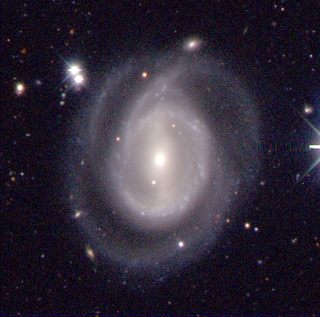
NGC 53 is a ringed barred spiral galaxy in the constellation Tucana. It was discovered by John Herschel on 15 September 1836. He described it as "very faint, small, extended". The galaxy is approximately 120,000 light-years across, making it about as large as the Milky Way.

NGC 67 is an elliptical galaxy located in the constellation Andromeda that was discovered on October 7, 1855, by R. J. Mitchell, who described it as "extremely faint, very small, round". The galaxy belongs to the NGC 68 group, which also contains the galaxies NGC 68, NGC 69, NGC 70, NGC 71, NGC 72, and possibly NGC 74.

NGC 68 is a lenticular galaxy, and the central member of the NGC 68 group, in the constellation Andromeda. The galaxy was discovered on September 11, 1784, by William Herschel, who observed the NGC 68 group as a single object and described it as "extremely faint, large, 3 or 4 stars plus nebulosity". As such, his reported location is between NGC 68, NGC 70, and NGC 71. By the time Dreyer looked at the galaxies to add to the NGC catalog, however, he was able to tell that the single galaxy observed by Herschel was in fact 3 adjacent galaxies, and cataloged them as NGC 68, NGC 70, and NGC 71.

VV 166, sometimes also called the NGC 70 galaxy group or Arp 113, is a cluster of galaxies in Andromeda. The main group was discovered in 1784 by William Herschel, who listed the galaxies as a single object. Later, in the 1880s, John Louis Emil Dreyer managed to discern some of the galaxies in this region and cataloged them. The prominent elliptical galaxy in the region, NGC 68, is probably not a member of the group.

NGC 70 is a spiral galaxy located in the constellation Andromeda. It was discovered on October 7, 1855, by R. J. Mitchell and was also observed on December 19, 1897 by Guillaume Bigourdan from France who described it as "extremely faint, very small, round, between 2 faint stars".

NGC 71 is an elliptical galaxy located in the constellation Andromeda. It is in the NGC 68 group. The galaxy was discovered by R. J. Mitchell in 1855, and observed in 1865 by Heinrich d'Arrest, who described it as "extremely faint, very small, round". The galaxy is about 110,000-130,000 light years across, making it just slightly larger than the Milky Way. The galaxy is the second largest in the NGC 68 group, after spiral galaxy NGC 70.
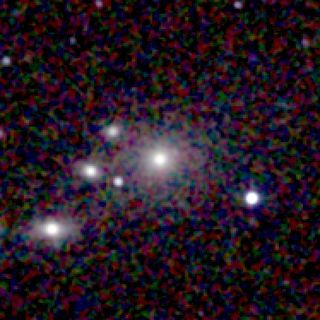
NGC 7012 is a large, bright elliptical galaxy located about 380 million light-years away from Earth in the constellation Microscopium. NGC 7012 was discovered by astronomer John Herschel on July 1, 1834.
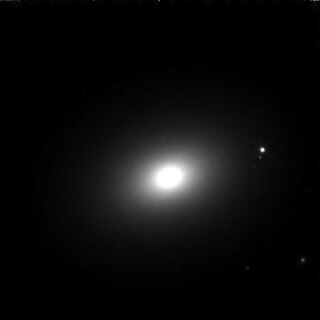
NGC 7014 is an elliptical galaxy located about 210 million light-years away from Earth in the constellation Indus. NGC 7014 was discovered by English astronomer John Herschel on October 2, 1834.

NGC 7035 and NGC 7035A are a pair of interacting lenticular galaxies located around 400 to 430 million light-years away in the constellation of Capricornus. The main galaxy, NGC 7035 was discovered by astronomer Frank Muller in 1886.

NGC 7038 is an intermediate spiral galaxy located about 210 million light-years away in the constellation of Indus. Astronomer John Herschel discovered NGC 7038 on September 30, 1834.

NGC 7083 is an unbarred spiral galaxy located about 134 million light-years away in the constellation of Indus. It is also classified as a flocculent spiral galaxy. NGC 7083 was discovered by astronomer James Dunlop on August 28, 1826.

NGC 4483 is a barred lenticular galaxy located about 55 million light-years away in the constellation of Virgo. NGC 4483 was discovered by astronomer Heinrich d'Arrest on March 19, 1865. NGC 4483 is a member of the Virgo Cluster.
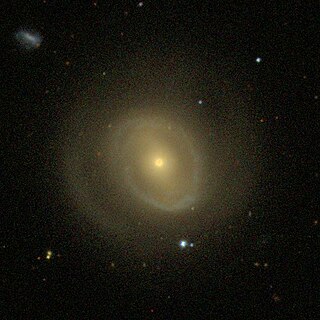
NGC 4454 is a barred spiral galaxy located about 123 million light-years away in the constellation of Virgo. NGC 4454 was discovered by astronomer William Herschel on April 17, 1784.

NGC 4466 is an edge-on spiral galaxy located about 50 million light-years away in the constellation of Virgo. NGC 4466 was discovered by astronomer Bindon Stoney on February 26, 1851. The galaxy is a member of the Virgo Cluster.

NGC 4633 is a spiral galaxy located about 70 million light-years away in the constellation of Coma Berenices. It is interacting with the nearby galaxy NGC 4634. NGC 4633 was discovered by astronomer Edward D. Swift on April 27, 1887. It was rediscovered on November 23, 1900, by astronomer Arnold Schwassmann and was later listed as IC 3688. NGC 4633 is a member of the Virgo Cluster.

NGC 4754 is a barred lenticular galaxy located about 53 million light-years away in the constellation of Virgo. NGC 4754 was discovered by astronomer William Herschel on March 15, 1784. It forms a non-interacting pair with the edge-on lenticular galaxy NGC 4762. NGC 4754 is a member of the Virgo Cluster.

NGC 4474 is an edge-on lenticular galaxy located about 50 million light-years away in the constellation Coma Berenices. NGC 4474 was discovered by astronomer William Herschel on April 8, 1784. It is a member of the Virgo Cluster.
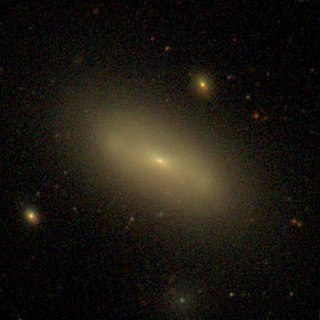
NGC 4497 is a lenticular galaxy located about 60 million light-years away in the constellation Virgo. NGC 4497 was discovered by astronomer William Herschel on March 15, 1784. It was rediscovered by astronomer Arnold Schwassmann on November 8, 1900 and was listed as IC 3452. NGC 4497 is a member of the Virgo Cluster.

NGC 4498 is a barred spiral galaxy located about 50 million light-years away in the constellation Coma Berenices. NGC 4498 was discovered by astronomer William Herschel on March 21, 1784. NGC 4498 is a member of the Virgo Cluster.
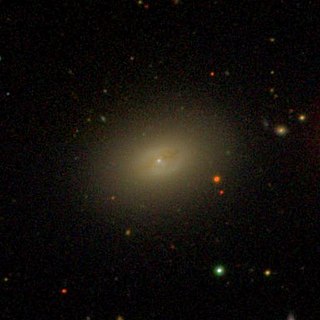
NGC 4506 is a spiral galaxy located around 50 million light-years away in the constellation Coma Berenices. It is classified as peculiar due to the presence of dust that surrounds its nucleus. NGC 4506 was discovered by astronomer William Herschel on January 14, 1787. It is a member of the Virgo Cluster.
















